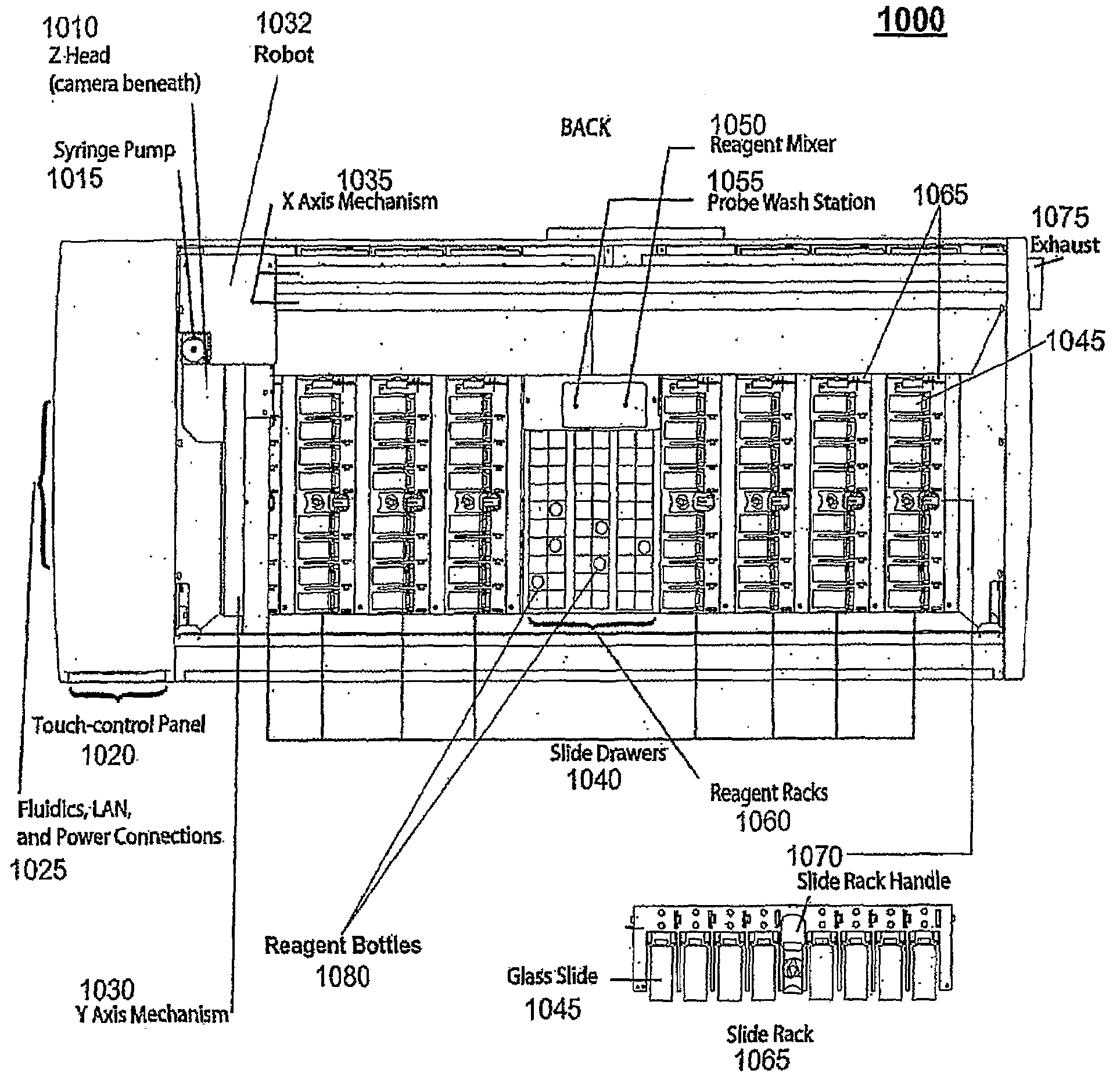Removal of Embedding Medium
a technology of embedding medium and biological samples, which is applied in the field of pretreatment of embedded biological samples, can solve the problems of time-consuming protocol creation, toxic, flammable, environmental hazards, etc., and achieve the effect of reducing the melting point, fast and automated combination, and simplifying the protocol
- Summary
- Abstract
- Description
- Claims
- Application Information
AI Technical Summary
Benefits of technology
Problems solved by technology
Method used
Image
Examples
experiment ii
[0197] Manual dewaxing in Histo-Clear® was followed by automatic TBST buffer wash on the Autostainer™.
[0198]This experiment tests the possibility of performing the washing step with TBST buffer using the Autostainer™. The dewaxing in Histo-Clear®, Target Retrieval and haematoxylin staining were still performed manually. The treated tissue was again tonsil (FFPE) and it included a control performed with standard dewaxing as described above.
[0199]The Histo-Clear® dewaxing was performed in a processing tank as described in experiment I. The slides were transferred directly to the slide rack in the Autostainer™ and manually added TBST buffer. Each slide was treated as follows; 10 ml TBST buffer was added, buffer was blown off, 600 μl TBST was added for 5 minutes, this was repeated once more and each slide was finally treated with 10 ml deionized water. The treatment with TBST buffer was performed at room temperature.
[0200]After the wash in TBST, a Target Retrieval was performed in addit...
PUM
 Login to View More
Login to View More Abstract
Description
Claims
Application Information
 Login to View More
Login to View More - R&D
- Intellectual Property
- Life Sciences
- Materials
- Tech Scout
- Unparalleled Data Quality
- Higher Quality Content
- 60% Fewer Hallucinations
Browse by: Latest US Patents, China's latest patents, Technical Efficacy Thesaurus, Application Domain, Technology Topic, Popular Technical Reports.
© 2025 PatSnap. All rights reserved.Legal|Privacy policy|Modern Slavery Act Transparency Statement|Sitemap|About US| Contact US: help@patsnap.com



